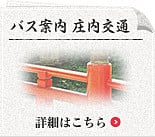Yudonosan
Yudonosan
Yudonosan Mountain
Yudonosan is a gently sloping mountain that lies in the Southwestern Gassan Mountains.
In the valley between this mountain and neighboring Shinakurasan Mountain is Yudonosan Shrine, which enshrines deities of good harvest and safety for the family.
One sees at Yudono, a spiritual place for Shugendo asceticism, the hot springs worshipped at the Yudonosan Shrine and the great rocks they flow over. As the inner sanctum of the three Dewa mountains, Yudonosan was considered to be the entrance to Dainichi Nyorai's kingdom for those who underwent training at Hagurosan and Gassan. It is the pure, mysterious world of faith where admonitions of "do not speak" and "do not listen" are heard.
In the valley between this mountain and neighboring Shinakurasan Mountain is Yudonosan Shrine, which enshrines deities of good harvest and safety for the family.
One sees at Yudono, a spiritual place for Shugendo asceticism, the hot springs worshipped at the Yudonosan Shrine and the great rocks they flow over. As the inner sanctum of the three Dewa mountains, Yudonosan was considered to be the entrance to Dainichi Nyorai's kingdom for those who underwent training at Hagurosan and Gassan. It is the pure, mysterious world of faith where admonitions of "do not speak" and "do not listen" are heard.
|
Approximately eight kilometers west of Gassan Mountain, next to the pure waters of the Bonjiri River, lies the mysterious fantasyland of Yudonosan Shrine. Here the three gods Oyamatsu-no-Mikoto, Onamuchi-no-Mikoto, and Sukunahiko-no-Mikoto are enshrined. Even today when making a pilgrimage to the shrine one must remove one's shoes and undergo purification before entry is allowed. Truly this abode of the gods is far removed from the secular world.
The three mountains of Dewa are believed to quiet the sprits of the ancestors, and as mountains of purification were from long ago an area of faith for the eastern thirty-three countries. Stone pillars with the name of Yudonosan Mountain inscribed on them can be found in villages everywhere. Pilgrims that came to Yudonosan Mountain underwent a thousand days of training. They built thatch huts all through the Hermit Swamp and devoted themselves to their ascetic learning. Among the several dozen stone pilgrim markers in the area some read, "30 days" or "50 days". While eating only plant matter they would undergo daily ablutions and carry out an unimaginable regimen of "Yudono no Houzen" worship three times a day for 30, 50 or a thousand days. They sought to remove the impurities from themselves and receive suffering on the mountain in the stead of others. Another goal was to achieve enlightenment and Buddhahood while still in the body (sokushinjobutsu), in order to leave one's body behind to save the people of the world. The Yudonosan method of achieving Buddhahood while still in the body involved removing all of the fat from one's body through ascetic discipline, and remain in a meditative state until one's body mummified. There are several dozen of these "sokushinbutsu" mummies in Shonai and Northern Niigata Prefecture. From days long past, Yudonosan Mountain was the focal point of faith for people, and even today many people come from far away to worship here. |









